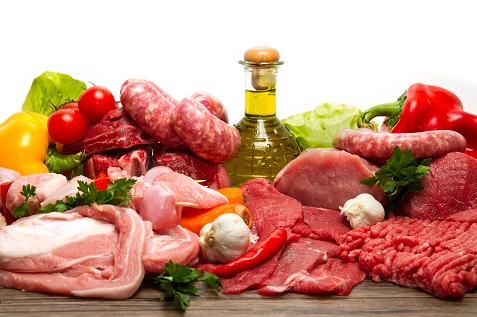Quantity versus Quality: Solving the Protein Puzzle

Protein, essential for life and good health, is somewhat of a puzzle to those who want to understand how to stay healthy and maintain a good weight. We know protein is essential, but many don’t know too much information beyond that.
Is there a limit to how much we should ingest? Should we depend on alternative sources like vitamins and powders for added protein? Is it unhealthy to opt for a vegetarian or vegan diet?
How Much Protein Should We Eat?
American doctors suggest a minimum of 8 grams of protein per 20 pounds of body weight. The Institute of Medicine suggests that protein account for 10% to 35% of caloric intake. Aside from medicinal recommendations, there’s little evidence of a ‘magic number.’ In America, recommended daily intake is 46 grams for adult women and 56 grams for men. But, why do we need protein at all?
What is Protein?
Protein, essential to muscles, bones, skin, hair, and body tissue, powers much of the body’s chemical reactions as well as hemoglobin, carrying oxygen to the blood. The body is composed of more than 10,000 different proteins.
Protein, composed of amino acids, produces them organically or by modifying other acids within the body. Integral amino acids derive from food; animal sources provide humans all needed amino acids. Other foods (fruits, vegetables, grains, nuts and seeds) lack one or more of the essential amino acids.
Alternate Diets
It’s important to know about protein to address alternative diets, like being a vegetarian or vegan. Those eliminating particular foods need appropriate levels of protein.
However, high-protein foods are not always ‘healthy.’ It depends on the composition of the food; a steak, high in protein but delivering over 10 grams of saturated fat, is not entirely healthy (10 grams of saturated fat is a lot). Likewise, a ham steak offers protein but is loaded with sodium (2,000 milligrams).
Consider the food ‘package’ when subscribing to special diets. Converse to the meat suggestions above, salmon is low in sodium and saturated fat, and a 6-ounce piece has 34 grams of protein.
Sickness and Protein
There is little evidence connecting sickness (other than food allergies) with high protein foods. Doctors have voiced eating foods high in “healthy” protein (chicken, fish, beans, nuts), lowers the risk of premature death and diseases.
Harvard found eating small amounts of red meat is associated with heart disease and strokes. It’s suggested to limit red meat (especially processed meats) or replace with poultry, fish, beans, etc.
One study found that participants, eating an additional 3-ounce serving of unprocessed red meat, increased risk of cardiovascular disease by 13%. Researchers estimate if men and women reduce intake to less than half a serving per day, one out of every ten cardiovascular-disease-related deaths could be prevented. High protein diets are great – as long as the protein derives from an altogether healthy source.
Weight Control
Harvard traced the diet and lifestyles of 120,000 men and women, finding those who ate more processed meats gained more weight over time. Those who ate more nuts gained less weight over the course of twenty years.
Staying fit and maintaining a ‘good weight’ can be just as confusing as adopting a ‘high protein’ diet. Protein is essential, but the composition of foods (besides protein) has a lot to do with maintaining weight and keeping unwanted pounds off.
Protein Powders
Protein powders (whey, soy, and casein-based), used by body builders and health enthusiasts, are consumed to get the benefits of protein without unwanted saturated fats, etc. Being water-soluble, whey is the most common protein alternative.
Whey is a ‘complete protein,’ containing all nine essential amino acids. ‘Vegans’ may prefer soy protein to avoid ingredients not included in their chosen diet. Doctors don’t debunk the supplemental value of protein powders, yet instruct patients that a full diet of body essentials can be found through eating sources of lean protein – meat, fish, chicken, and dairy products.
Growing teens, weight lifters, those recovering from injury, and vegans (those with alternative diets) use protein powders often to complement foods, training, growth, etc.
Calculating Protein
How can one calculate if they are getting a ‘healthy’ amount of protein on a regular basis? The maximum intake per day is 0.9 grams for every pound of body weight. So, even if you’re ingesting high amounts of protein each day, the body can only ‘use’ a percentage.
A bodybuilder, who weighs 170, requires about 150 grams of protein per day to ‘build’ added muscle. However, one must consider the entire ‘package’ of the meal to ensure more protein does not equal more sodium, saturated fats, etc.
Glen Miranda has always been a fitness fanatic, and he’s not afraid to let others know. A longtime writer, he likes to help others get healthy and fit by sharing his insights on better living. You can read his helpful articles on many lifestyle, health and fitness blog sites today.
Related Posts
Posted in: Food & Drink





